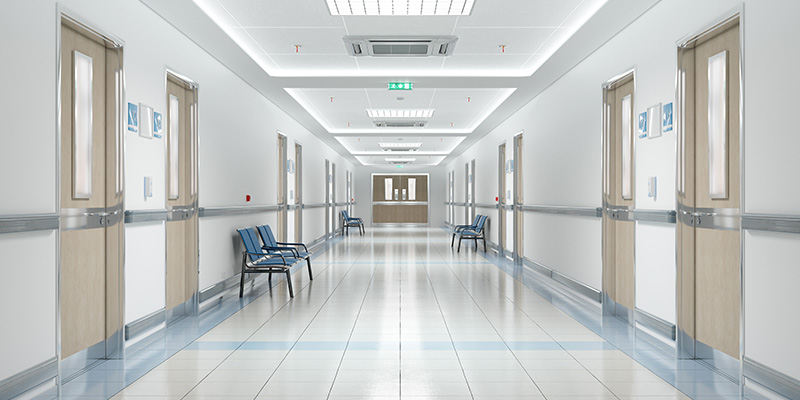
A Complete Guide to Hospital Insulation – Comfort & Savings
Maintaining a comfortable and controlled environment is essential in hospitals. As critical institutions that cater to the well-being and recovery of patients, hospitals must prioritise insulation in their buildings. Proper insulation plays a crucial role in maintaining optimal temperature levels, minimising energy consumption, reducing noise pollution, and creating a conducive healing environment. In this article, we will explore the importance of insulation in hospitals and the benefits it offers to patients, staff, and overall healthcare operations.
The Importance of Insulation in Hospitals
Creating a Comfortable Environment
Hospitals need to provide a healing environment where patients can recover comfortably. Insulation plays a vital role in maintaining consistent and comfortable indoor temperatures. This helps patients feel at ease and supports their healing process. By regulating the indoor climate, insulation contributes to a more serene and stress-free atmosphere, benefiting both patients and healthcare professionals.
Energy Efficiency in Hospitals
Energy efficiency is a significant concern for hospitals, considering their high energy demands. Insulation plays a crucial role in reducing heat transfer and minimising energy loss. By insulating hospital buildings effectively, healthcare facilities can significantly decrease energy consumption, resulting in cost savings and a more sustainable healthcare system.
Benefits of Insulation in Hospitals
Temperature Control & Comfort
Proper insulation helps hospitals maintain optimal temperature levels throughout the year. By reducing heat loss in winter and heat gain in summer, insulation ensures a comfortable environment for patients, regardless of external weather conditions. Stable indoor temperatures contribute to patient comfort, promote better sleep, and support the healing process.
Energy Efficiency & Cost Savings
Insulation is a key factor in improving energy efficiency and reducing operational costs in hospitals. By preventing thermal energy loss, insulation minimises the workload on heating, ventilation, and air conditioning (HVAC) systems. This leads to energy savings and lowers utility expenses. Hospitals can redirect these savings towards patient care, infrastructure improvements, or medical equipment upgrades.
Noise Reduction & Privacy
Hospitals can be noisy environments due to constant activities, medical equipment, and foot traffic. Insulation helps reduce noise transmission between rooms, creating a quieter atmosphere that promotes healing and privacy for patients. Additionally, insulation materials with sound-absorbing properties can be used to reduce sound reverberation in common areas and corridors, creating a more peaceful environment for patients, staff, and visitors.
Air Quality
Insulation contributes to maintaining high indoor air quality in hospitals. It acts as a barrier against air pollutants, allergens, and airborne contaminants, helping to minimise the risk of respiratory issues. By preventing the infiltration of external pollutants and maintaining a controlled indoor environment, insulation supports a healthier and safer environment for patients and healthcare professionals.
Best Areas to Insulate for a Hospital
Building Envelope Insulation
Insulating the building envelope of hospitals is essential for energy efficiency and patient comfort. Exterior wall insulation, roof insulation, and floor insulation contribute to reducing heat transfer, preventing thermal bridging, and maintaining consistent temperatures throughout the facility. Proper insulation materials, such as mineral wool, spray foam, or rigid foam boards, should be carefully selected and installed to maximise energy efficiency and thermal performance.
HVAC System Insulation
Insulating HVAC systems in hospitals can further improve energy efficiency and thermal control. Insulating air ducts, pipes, and equipment helps prevent heat loss or gain during the distribution of conditioned air. This ensures that the delivered air retains its desired temperature, reducing energy waste and improving overall system performance. Proper insulation of HVAC systems also helps decrease condensation issues, preventing moisture-related problems and maintaining air quality.
Conclusion
Insulation plays a vital role in maintaining optimal temperature levels, energy efficiency, and comfort in hospitals. By investing in proper insulation for the building envelope and HVAC systems, healthcare facilities can create healing environments that support patient recovery, reduce energy consumption, and enhance overall healthcare operations. Insulation not only contributes to patient comfort but also promotes sustainability and provides long-term cost savings. As hospitals continue to prioritise patient well-being and energy conservation, insulation remains a crucial element in providing the best possible care while reducing environmental impact.


